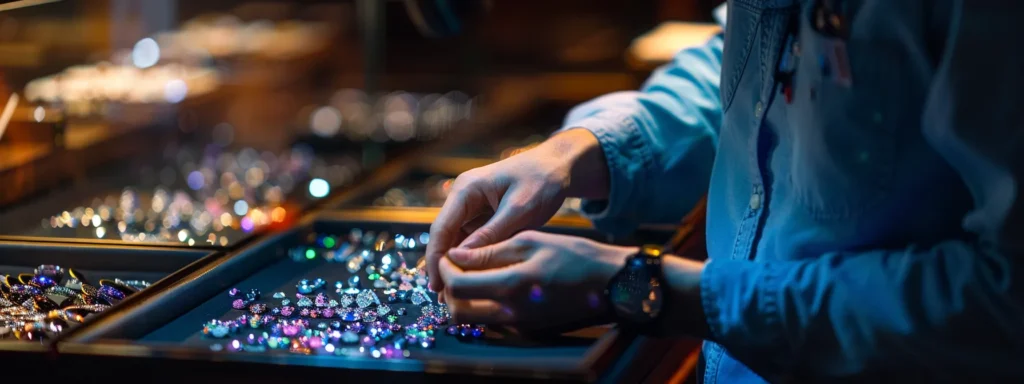Gemstones Therapy
Selecting Durable Gemstones for Your Bracelet Collection
Selecting Durable Gemstones for Your Bracelet Collection
When it comes to real gemstone bracelets, making the right choice can significantly shape your future accessory collection. Picture a bracelet adorned with stunning agate or a beautifully polished cabochon, each stone not only elevating your outfit but also standing the test of time. Price is often a consideration, but understanding durability is key to ensuring these pieces will last. Selecting the perfect gemstone goes beyond aesthetics; it involves recognizing which stones can withstand daily wear and tear. Keep reading to discover essential criteria that will empower you to make informed choices for your bracelet collection!
Key Takeaways
- Understanding the Mohs Scale of Hardness helps evaluate gemstone durability for everyday wear
- Selecting robust settings like titanium enhances the longevity and elegance of gemstone bracelets
- Consider gemstone clarity grades to maximize brilliance and maintain visual appeal in your jewelry
- Evaluate gemstones for chemical and light sensitivity to preserve their beauty over time
- Pairing the right facet cuts with bracelet designs boosts both durability and aesthetic value
Identifying the Most Durable Gemstones for Bracelets
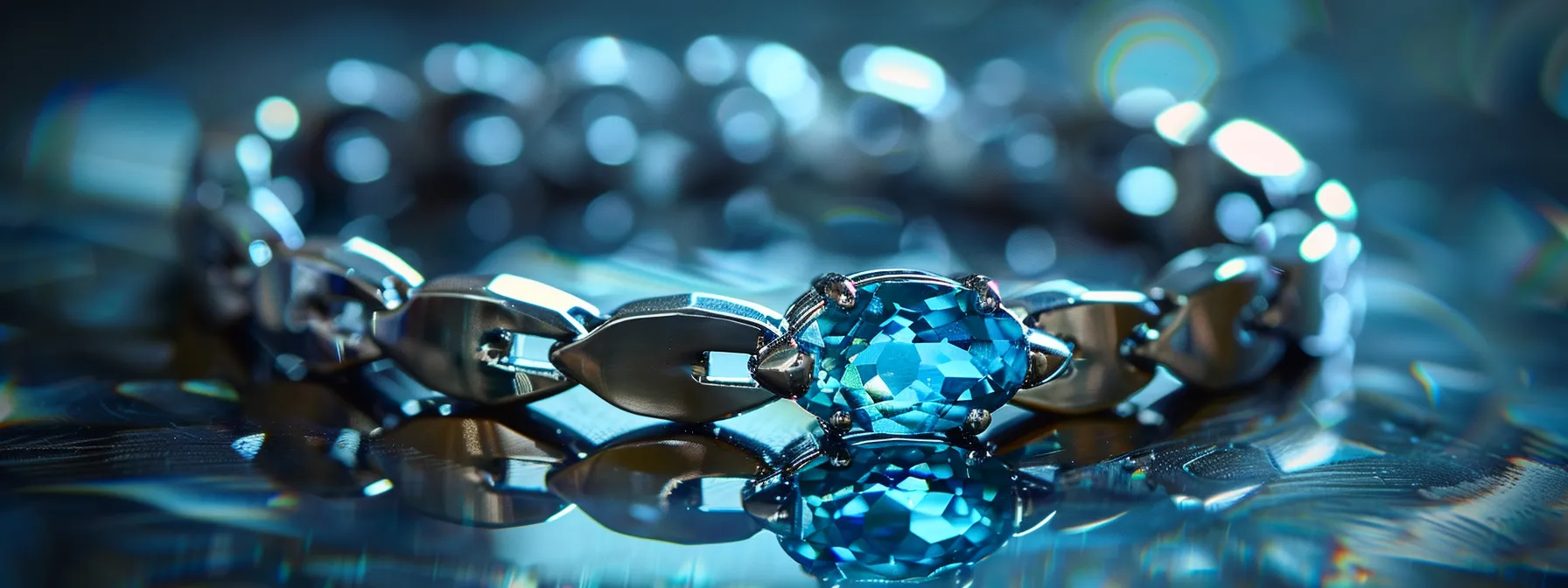
As you consider the durability of real gemstone bracelets for your bracelets, it’s essential to understand the Mohs Scale of Hardness, a measure that helps you identify stones that can withstand everyday wear. High-hardness gemstones like corundum and aquamarine stand out not only for their strength but also for their beauty, making them ideal choices for jewelry that you intend to wear frequently. Striking a balance between durability and aesthetics is key; while you might appreciate the brilliance of intricately faceted stones, ensuring they can endure daily use is equally crucial. When you select titanium settings for your gemstone bracelets, you know you are pairing robustness with elegance, allowing you to enjoy your jewelry without concern. imagine your future
Understanding the Mohs Scale of Hardness
The Mohs Scale of Hardness is a useful tool for evaluating gemstone durability based on their mineral composition and crystal structure. For instance, morganite ranks 7.5 to 8, making it a solid choice for daily wear, while lapis lazuli, with a lower rating, may be better suited for special occasions. Additionally, gemstones like topaz sit at a 8 on the scale, indicating good resilience, and when set in a secure bezel, they can enhance the longevity of your bracelet.
Examples of High-Hardness Gemstones Suitable for Everyday Wear
When selecting gemstones for everyday wear, the combination of hardness and aesthetics is paramount. Spinel, for instance, rates between 7.5 and 8 on the Mohs scale, making it an excellent choice for jewelry that balances durability and visual appeal. Moreover, choosing gemstones that exhibit strong mineral composition contributes to your sustainability goals, ensuring that your jewelry not only looks good but also stands the test of time.
The Balance Between Durability and Appearance
When curating your bracelet collection, prioritize a harmonious blend of toughness and visual allure. Opt for gemstones like ruby, known for their impressive hardness and remarkable color, ensuring that your pieces withstand daily wear without sacrificing style. Additionally, consider the ethics of your choices, as sustainable practices surrounding carbon sourcing should influence your selections, creating a collection that reflects both your aesthetic and values.
As you discover the most durable gemstones for bracelets, it’s essential to consider what truly makes a gemstone stand out. With durability in mind, let’s explore the key criteria that guide you in selecting the perfect gemstone for your bracelet.
Essential Criteria for Choosing a Bracelet Gemstone

Choosing the right gemstone for your bracelet collection demands careful consideration of various factors that influence both durability and personal style. Start by evaluating the toughness and scratch resistance of different crystals, as these qualities determine how well the stones can withstand daily wear. Additionally, consider stability to chemicals and light; some gemstones may tarnish or fade when exposed to certain elements, which can affect their longevity. Don’t overlook the importance of weight and size, as these factors contribute to overall comfort, especially for items you plan to wear frequently. By addressing these criteria, you can mitigate the risk of dissatisfaction and create a collection that aligns with your taste while ensuring longevity.
Evaluating Gemstone Toughness and Scratch Resistance
In assessing gemstone toughness and scratch resistance, consider the structural integrity of each stone. Understanding aspects such as diamond clarity and potential fractures can significantly influence the longevity of your bracelet. When paired with durable materials like sterling silver or specialized alloys, your jewelry can achieve both resilience and elegance, making it suitable for everyday wear or as a stunning pendant.
Considering Gemstone Stability to Chemicals and Light
When choosing gemstones for your bracelet collection, consider how they respond to exposure to chemicals and light to maintain their beauty over time. For instance, turquoise, while vibrant and captivating, can be sensitive to certain cleaning agents and sunlight, which can affect its appearance. Understanding the stability of the gemstone against everyday wear and tear is vital in preserving the overall aesthetic of your jewelry, especially when set in precious metals, as changes can diminish its appeal and desirability.
Importance of Weight and Size for Bracelet Comfort
To ensure comfort while wearing your bracelet, consider the weight and size of the gemstones alongside the metal setting. A balance between the inherent weight of stones like moissanite and the lightweight properties of materials such as copper can enhance your overall experience. Accurate measurement of your wrist size is crucial; choosing a well-fitted bracelet not only accentuates your birthstone but also prevents discomfort during daily wear.
Selecting the perfect bracelet gemstone goes beyond just style; it’s also about strength and longevity. Uncovering how color influences both the beauty and durability of your gemstone choice will empower your selection process.
The Role of Gemstone Color in Selecting Durable Bracelets
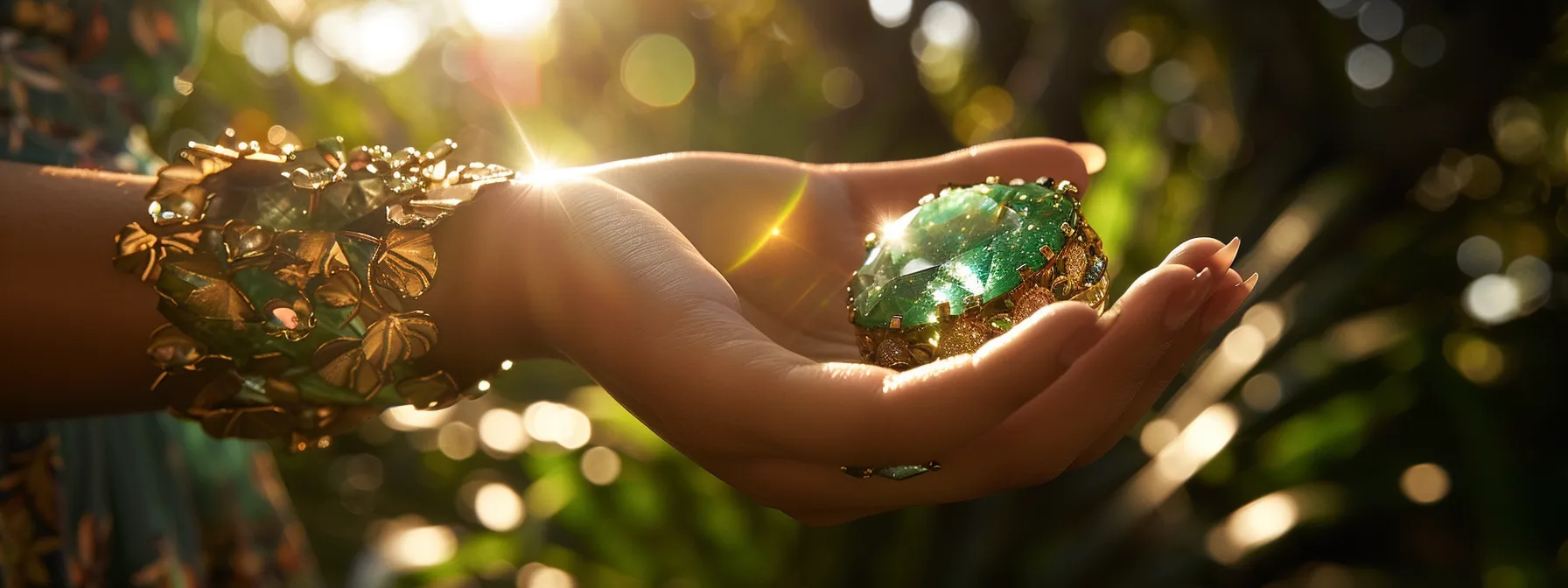
Color saturation plays a significant role in your selection of durable gemstones for bracelets. When choosing a striking emerald for a bangle, its rich hue can enhance visual appeal, yet it’s essential to consider how the color may respond to exposure over time. Evaluating the stability of colors in gemstones like spodumene under sunlight and heat is crucial to avoid fading. Additionally, understanding the response of various stones to physical stress, such as brush contact with surfaces that could affect cleavage, allows for informed decisions, ensuring your collection remains both beautiful and enduring.
How Color Saturation Influences Gemstone Selection
When you consider color saturation in gemstones, think about the energy that different hues can convey. A vibrant opal, known for its play-of-color, offers not just beauty but can be an environmentally friendly choice, reflecting your values. As you select gemstones for everyday wear, ensure they can withstand abrasive elements, preserving their stunning appearance over time.
Color Stability in Gemstones Under Sunlight and Heat
Color stability in gemstones is crucial for maintaining the beauty of your bracelets over time. Stones such as peridot and chrysoberyl exhibit excellent resistance to fading, making them reliable choices for daily wear. In contrast, gems like jade and blood diamonds may require careful handling to prevent color degradation when exposed to prolonged sunlight or heat.
- Consider the color stability of gemstones like peridot and chrysoberyl.
- Evaluate the potential risks for stones like jade and blood diamonds.
- Prioritize stones that maintain their hue under varied conditions.
Gemstone color plays a vital role in enhancing the aesthetic appeal of bracelets, but there’s more to consider. Clarity significantly influences the overall durability of gemstones, making it essential for anyone looking to invest wisely in jewelry.
Understanding the Impact of Clarity on Gemstone Durability
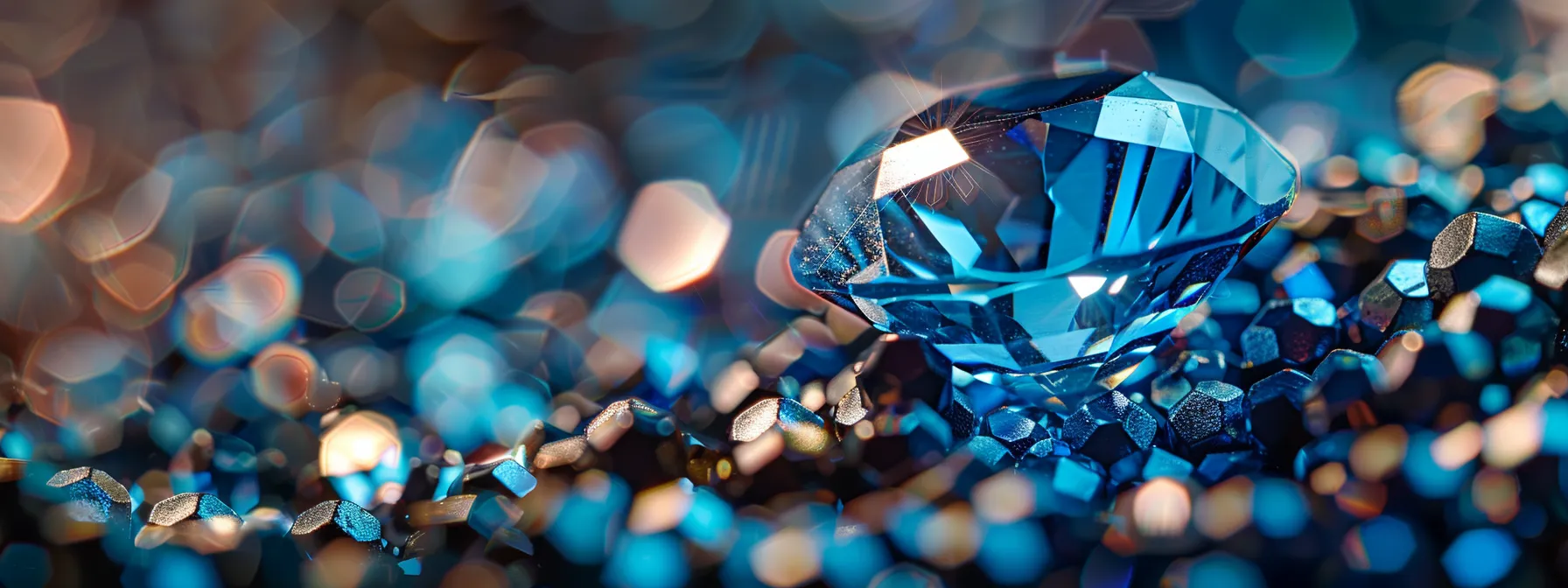
As you delve into the world of bracelet gemstones, understanding clarity grades becomes essential in selecting stones that not only dazzle but also endure. Opt for clarity grades that suit your lifestyle; higher clarity typically enhances brilliance, enhancing the appeal of stones like onyx and various shades of blue, which can beautifully complement your cuff or wire designs. Furthermore, explore techniques that improve gemstone clarity, preserving durability while maximizing aesthetic value. This ensures that your chosen pieces remain stunning over time, embodying both visual allure and lasting strength.
Clarity Grades Ideal for Bracelet Gemstones
When selecting gemstones like garnet or tanzanite for your bracelet collection, understanding clarity grades is crucial. Higher clarity enhances the lustre of these stones, making them more visually captivating. Opting for prong settings can maximize the light exposure of quartz, ensuring its brilliance stands out beautifully in your jewelry pieces.
Techniques for Enhancing Gemstone Clarity Without Compromising Durability
To enhance the clarity of gemstones like moonstone and beryl while ensuring their durability, consider opting for specific cutting techniques that maximize light transmission. For instance, using precise faceting can highlight the inherent beauty of your stones, such as amethyst and tourmaline, while minimizing inclusions. Additionally, when crafting beads for your bracelet collection, ensure they are polished meticulously to preserve their strength and visual appeal, allowing each piece to withstand the test of time.
Clarity is just the beginning; the journey of a gemstone continues with enhancements that elevate its beauty and resilience. Unraveling the significance of these treatments reveals how they can transform an already remarkable stone into a dazzling masterpiece.
The Significance of Gemstone Enhancements and Treatments
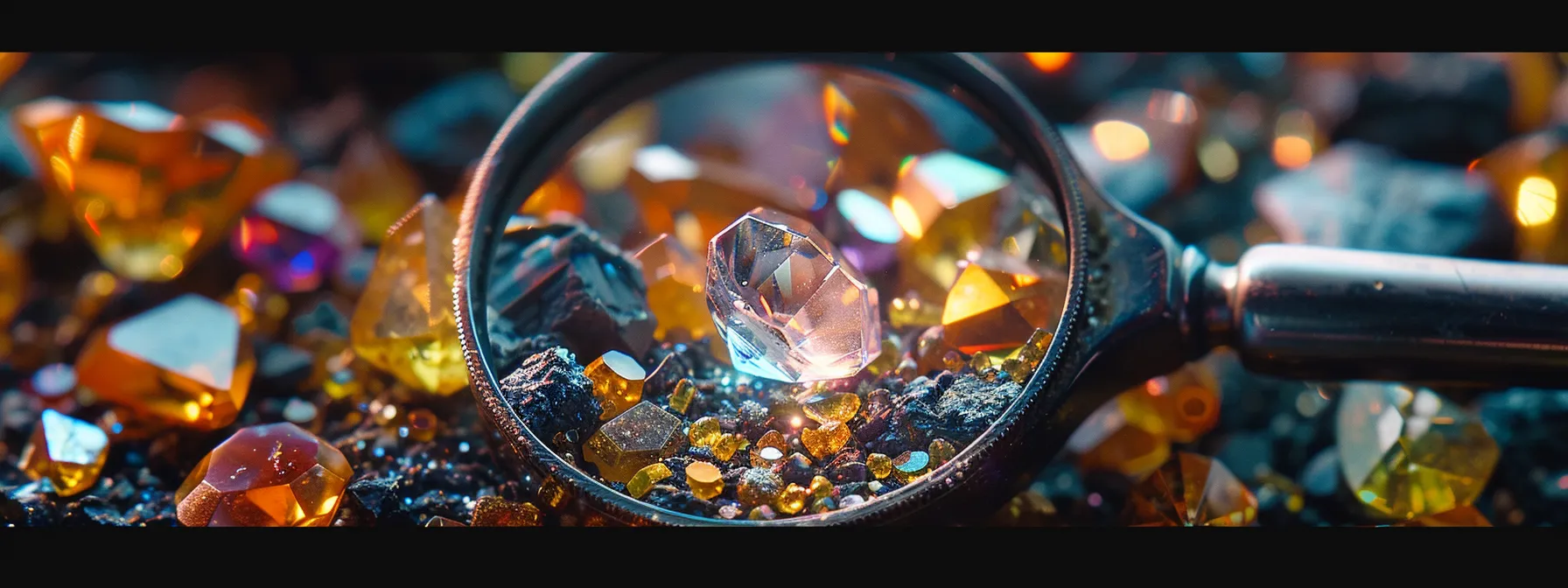
Understanding the significance of gemstone enhancements and treatments is vital as you build your bracelet collection. Various techniques can improve a stone’s hue, clarity, and overall appearance while potentially influencing its durability. For example, treatments such as heat treatment or dyeing can alter a gemstone‘s color but may affect its resilience on the Mohs scale. As you consider options, familiarize yourself with the common enhancements that might impact wearability, and utilize resources from the Gemological Institute of America to identify these treated gemstones. This knowledge empowers you to make informed selections, ensuring your collection not only shines brightly but can also stand the test of time.
Common Gemstone Enhancements and Their Durability Effects
When considering enhancements for your gemstones, it’s vital to recognize how these treatments can impact durability. For example, heat treatment can enrich the color of sapphires and topaz, providing stunning visuals while maintaining good hardness levels. However, enhancements like dyeing may offer transient beauty but could compromise the resilience of stones in environments where wear and tear are a factor, especially when set in robust settings such as platinum, which further supports the longevity of your pieces.
How to Identify Treated Gemstones When Selecting for Bracelets
Identifying treated gemstones is essential to ensure you make selections that align with your expectations of durability and beauty. Begin by requesting a certification from reputable gemological institutes, which often provide details on any enhancements or treatments the gemstone has undergone. Additionally, learning to recognize visual cues, such as unusually vibrant colors or unnatural patterns, can signal that a gemstone has been treated or enhanced in some way:
- Ask for certification to confirm the gemstone‘s authenticity and treatment.
- Look for any indications of enhanced color or patterns that seem unnatural.
- Familiarize yourself with common treatments to enhance your recognition skills.
Understanding the enhancements and treatments that elevate gemstones opens the door to endless possibilities. Now, let’s dive into how the right facet cuts can transform a simple bracelet into a striking statement piece.
Choosing Gemstones With Ideal Facet Cuts for Bracelets

Your choice of facet cuts plays a significant role in the overall durability and aesthetic appeal of gemstones in your bracelet collection. Certain cuts can enhance a stone’s structural integrity, allowing it to resist everyday wear. Ideal facets create optimal light reflection, which not only emphasizes the beauty of the gemstone but also contributes to its longevity. Additionally, pairing the right gemstone cut with specific bracelet designs maximizes both visual interest and practicality. By understanding these relationships, you can select pieces that not only look stunning but also withstand the rigors of daily life.
Facet Cuts That Enhance a Gemstone‘s Durability
Choosing the right facet cuts can significantly impact the durability of gemstones in your bracelet collection. For instance, the cabochon cut, with its smooth, rounded surface, reduces the chances of chipping or scratching compared to more intricate cuts. Opting for a cut that reinforces the stone’s structural integrity ensures your jewelry remains intact even with regular wear:
- Consider cabochon cuts for gemstones prone to chipping.
- Explore the benefits of a rounded cut to enhance durability.
- Assess cuts that maximize light reflection for visual appeal.
Ultimately, understanding these aspects of gemstone cuts enables you to make informed choices that marry durability with aesthetics.
Matching Gemstone Cuts With Bracelet Designs
When matching gemstone cuts with bracelet designs, consider how each cut complements the overall aesthetic and functionality of the piece. A well-chosen cut can highlight the unique characteristics of the gemstone while ensuring it harmonizes with the bracelet’s style, whether you prefer a classic chain or a more contemporary bangle. By thoughtfully selecting cuts that enhance both the appearance and durability of the stones, you can create bracelets that not only look exquisite but also endure daily wear.



